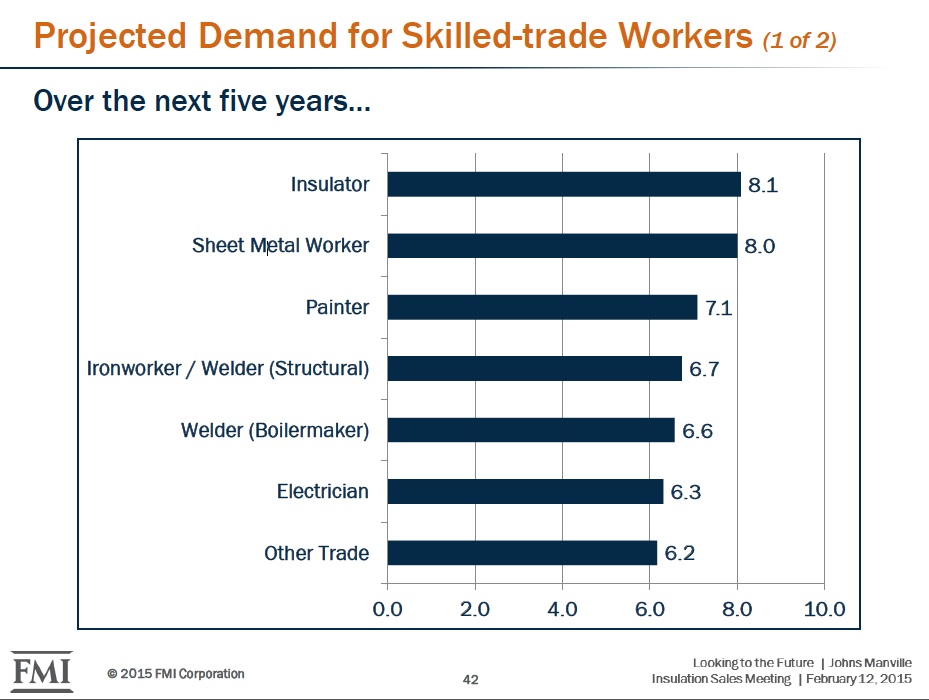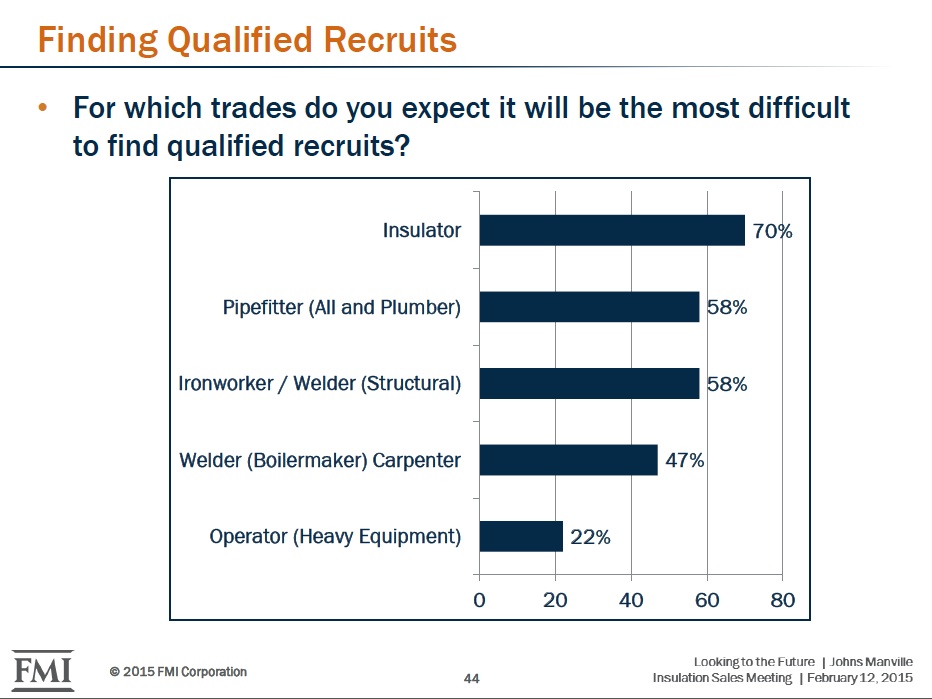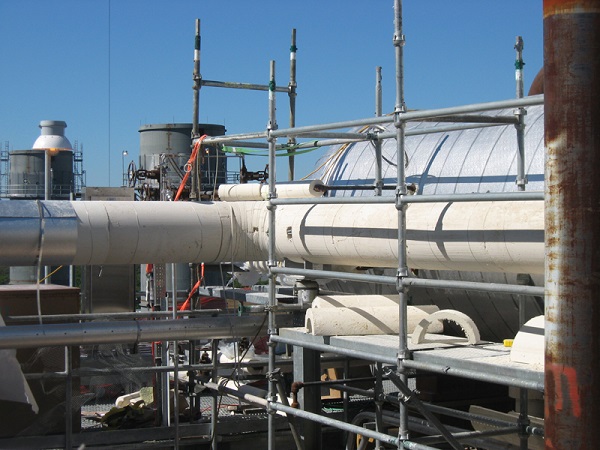I recently attended a conference, and one of the sessions focused on the overall state of the economy and the construction industry in general. The presentation was provided by FMI Corporation, a major consulting firm focused on the construction market. It was great to hear that many areas of North America are growing at a reasonable rate, and as a result, the construction market is expanding as well.
However, the industry is facing a real, mid- to long-term labor shortage that is affected by the pending retirement of baby boomers, slow-growing population rates, and the lingering effects of the recession that forced many construction workers out of the market and into other, less volatile segments of the economy.
One key trend that I gleaned from the market data was related to the following slides:

These are the results of a survey of 500+ contractors who were asked to rate on a scale of 1-10 the demand of these skilled trades for their projects over the next 5 years. Insulators were projected to have the highest demand. That’s great news for the dedicated professionals that take great pride in installing insulation! Unfortunately, there is a major downside. FMI also surveyed 88 professional recruiters who hire skilled labor for the construction industry, and 70% of the respondents said that insulators will be the hardest craft to find and hire.

As we look forward to planning for future projects and maintenance, we need to keep in mind the potential impact the labor shortage could have on the price of installation. To put it simply, the products you specify today will impact the maintenance you perform tomorrow…and based on the numbers, it’s going to be difficult to find someone to perform that maintenance.
Everyone knows there is a constant battle between construction and maintenance crews when it comes to the types of insulation installed. The construction group wants to meet the design requirements at the lowest possible cost while the maintenance group wants to ensure that the insulation can withstand the rigors of everyday use – including stress from people treating pipe racks like treadmills.

Each insulation has definite benefits and drawbacks; a perfect example of this is determining whether to use calcium silicate or mineral wool for any given application.
Mineral wool is great for high-temperature, low-impact environments. It is light, easy to fabricate, easy to install, and less expensive than calcium silicate. This means that you’ll save time and money upfront during the initial installation – which will come in handy when a shortage of installers drives up the installation cost. In comparison, calcium silicate with the XOX corrosion inhibiting package offers the best CUI protection on the market and extremely high compressive-strength.
In environments where corrosion under insulation is likely, or the insulation will have to withstand frequent impact (whether from foot traffic or general application), calcium silicate will be able to accommodate the prolonged demands of the application that would cause a lighter insulation like mineral wool to break down. Additionally, mineral wool lacks the corrosion inhibitor XOX, making it less resistant to CUI. Though you will pay a higher up-front cost for calcium silicate, its durability gives it a lifespan of ~20 years, even in corrosive, high-impact environments. Naturally, this extended lifespan allows you to avoid replacements that would be necessary if you used a less substantial insulation.
Again both of these options provide the versatility to help you preemptively address the labor shortage that the industry will be facing in the near future. As you take the time to consider the applications for these products, keep in mind that you can use multiple products on the same jobsite.
For example, to capitalize on calsil’s compressive strength, you can use it on pipes that run horizontally to the ground or ones that are likely to have a lot of foot traffic. Since vertical pipes don’t experience the same impact damage that horizontal pipes do, you can use mineral wool to insulate pipes that run vertically. This will reduce the potential for damage to the mineral wool, while allowing you to take advantage of the lower cost, lighter-weight material. Similarly, using calsil in high-impact areas will offer the same performance, with the added benefit of compressive strength. By coupling the products together, you can take advantage of the assets of each product without sacrificing the performance or cost benefits of either.
